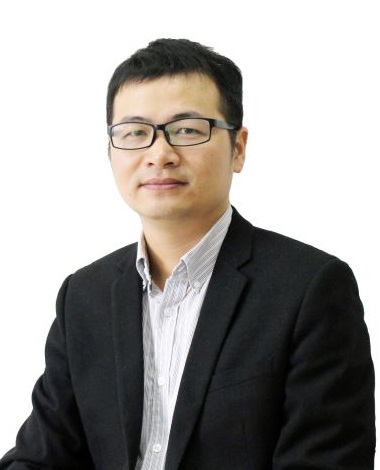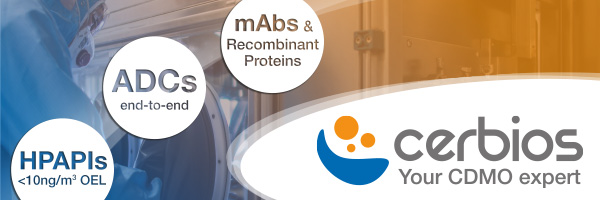Contract Services
Mastering the multi-product approach 31st August 2018
By Joshua Zhang, Head of Jinshan site at STA Pharmaceutical, a WuXi AppTec company
To have a successful multi-product facility for small molecule APIs, it is essential to have a robust GMP and EHS system, mu

To have a successful multi-product facility for small molecule APIs, it is essential to have a robust GMP and EHS system, multi-purpose equipment and experienced teams from all functions – some of which can take years to accumulate, explains Joshua Zhang, Head of Jinshan site at STA Pharmaceutical, a WuXi AppTec company.
A robust GMP system that satisfies regulatory agencies, as well as clients’ QA teams, is vital for any contract development and manufacturing organization (CDMO) delivering a range of projects. To give just one example, our own GMP system is operated under ICH Q7, 21CFR part 211 of FDA, EU EudraLex and China GMP. Every year, we have passed 20 (or more) CNDA NDA inspections, as well as GM, and we passed four inspections from the US FDA in 2013, 2014, 2016 and 2018.
As well as regulatory systems, a number of Standard Operating Procedures (SOPs) such as Project Transfer, New Product Introduction, Impact Assessment, Criticality Analysis, Gap Analysis, QbD Implement and Control Strategy, Quality Risk Management, Cleaning Validation, Customer Contract Manufacture Procedure, Process Validation (and many more) also need to be maintained and updated. These SOPs and document templates are a form of guidance to ensure that multi-product facilities can operate continuously to GMP standards.
A strong EHS system is also very important to a multi-product facility, which is not only needed to meet local government’s requirements, but also need to pass clients’ EHS audits for business continuity management. A strong PSM (process safety management) and EHS system ensure all kinds of chemical reactions can be handled safely – including hazardous reactions.
Furthermore, it is essential to have equipment that can adapt to multi-purpose designs. A good example is that 10 years ago our first commercial plant was designed for just one commercial product. A total of 18 reactors only equipped with 3 centrifuges and two dryers were installed. After three years, the product demand dropped due to the launch of next generation medicines. Time and money needed to be invested, to modify the first commercial plant into a multi-product plant. From this experience, we learned to implement a modular facility design strategy. Modular facility design allows each plant to have the suitable ratio of reactors on glass-lined, stainless steel or Hastelloy, and each bay is also equipped with a suitable numbers of isolation equipment and dryers. This enables the plant to have the flexibility to meet all kinds of reaction conditions and work-up operations.
It is equally as important for QC labs to be equipped with all types of state-of-the-art analytical instruments, so that batches can meet the testing requirements for a variety of projects.
Beyond this, however, the most importance part of the system is the team with expertise and confidence in the multi product environment. In our case, the GMP, EHS and other systems have been gradually built by our teams over more than 10 years, so every function has the SMEs (subject matter expert) and we’ve been able to adapt and improve them so that we have a number of robust safeguards in place.
Investing in new technologies and techniques and is also crucial. Currently, we use an APS (Advanced Planning & Scheduling) system that helps us to do careful planning for all projects. All the reactor’s status (in-use, stand-by, in-cleaning, in-maintenance, in-released) can be displayed on the APS system in real time. The project team submits the equipment booking application to APS based on their process, and the planning team uses APS to summarize all the booking applications and do scheduling to build and follow up long-term and short-term equipment planning to meet the all projects’ lead-time requirement.
Of course, turnover puts any new projects at risk of contamination, and this is also something that needs to be addressed. Engineering controls and SOPs need to be implemented to avoid such contamination – such as separated bays to produce different products and using contained production equipment from charging to the discharging etc. At WuXi STA, the cleaning validations of products that directly contact equipment have been implemented. Our dedicated cleaning SME and cleaning engineers have built up a validated cleaning system. Even though the cleaning system has passed many regulatory agency inspections and client audits, we are still continually improving. The robust cleaning system is to prevent contamination or adulteration of the manufacturing drug substances and other residues, such as solvents and microbes, to prevent contamination.
Collectively, this means that multi-product CDMOs are required to enforce the tightest controls of Process Analytical Technologies and QbD principles to successfully and seamlessly switch between projects and compounds by strong multi-product-trained teams. It’s only by having complete control of reactions and conditions that safety, capacity and quality can be simultaneously maintained.
Author:
Joshua Zhang, Head of Jinshan site at STA Pharmaceutical, a WuXi AppTec company
Joshua Zhang, Head of Jinshan site at STA Pharmaceutical, a WuXi AppTec company
Contact:
Yu Lu, Vice President of Business Operations at STA Pharmaceutical (a WuXi AppTec company), 107 Morgan Lane, Plainsboro Township, NJ 08536, USA
Yu Lu, Vice President of Business Operations at STA Pharmaceutical (a WuXi AppTec company), 107 Morgan Lane, Plainsboro Township, NJ 08536, USA
T: +1 615 675 200
E: yu.lu@wuxiapptec.com
E: yu.lu@wuxiapptec.com



